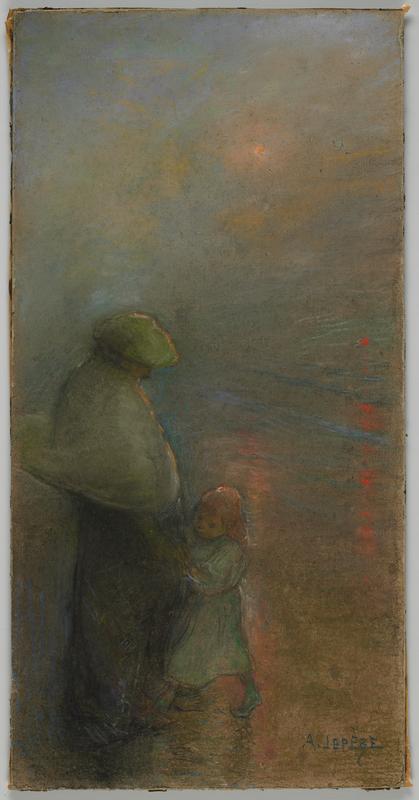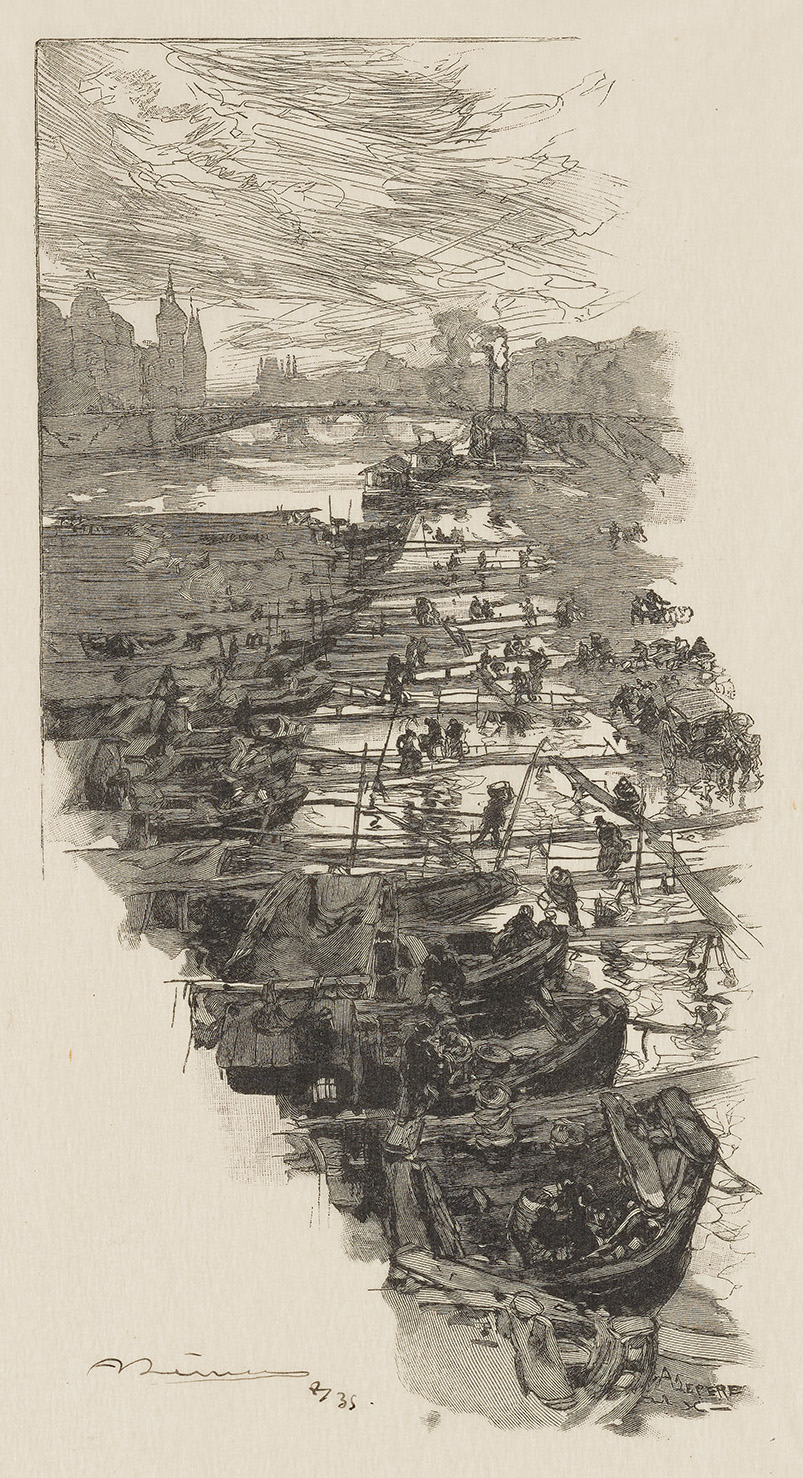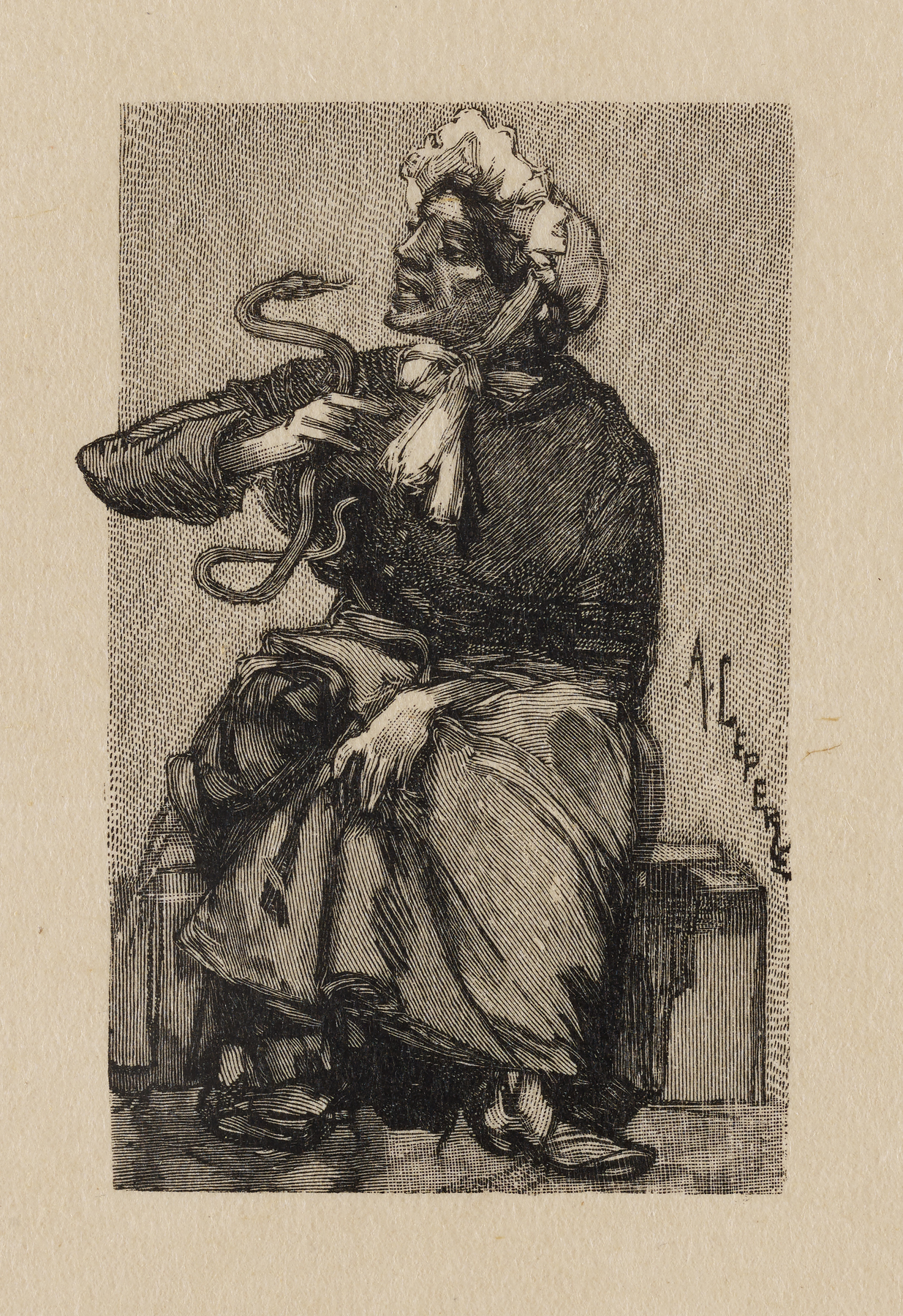
109. Auguste Louis Lepère, Street Scene (Mother and Child)
| Artist | Auguste Louis Lepère, French, Paris 1849–Domme, Dordogne 1918 |
| Title, Date | Street Scene (Mother and Child), not dated |
| Medium | Pastel on tan prepared paper |
| Dimensions | 18 3/4 × 9 7/16 in. (47.6 × 24 cm) |
| Inscriptions + Marks | Lower right: A. LEPERE |
| Provenance | [Galerie Jacques Fischer, Paris, until 1999; to Weisberg]; Yvonne and Gabriel Weisberg, Minneapolis |
| Exhibition History | "Expanding the Boundaries: Selected Drawings from the Yvonne and Gabriel P. Weisberg Collection," Mia (2008) and Snite Museum of Art, Notre Dame, Ind. (2010); "Children in Paris: The Birthday Boy and Friends," Mia, 2017; "Reflections on Reality: Drawings and Paintings from the Weisberg Collection," Mia, 2022–23 |
| References | Lisa Dickinson Michaux with Gabriel P. Weisberg, "Expanding the Boundaries: Selected Drawings from the Yvonne and Gabriel P. Weisberg Collection" (exh. cat.), Minneapolis Institute of Arts (Minneapolis, 2008), pp. 82–83, fig. 52 and back flap |
| Credit Line | Promised gift of Gabriel P. and Yvonne M.L. Weisberg, Minneapolis |


The author of this pastel, Auguste Lepère, was one of the most significant woodcut artists of the nineteenth century. As such, he was acutely aware of Japanese ukiyo-e woodcuts and paintings. Not one to mimic Japanese aesthetics and processes, he chose certain attributes and deployed them to his own ends. Here he emulated the elongated vertical format of Japanese scrolls, but he did not employ the fields of flat color, sinuous contours, and sometimes dense patterning often seen in Japanese art. Instead, he blended his colors using staccato marks and stumping (smudging), and drew searching outlines to produce the hazy atmosphere of a dark, damp day.
Lepère left us to wonder where we are and what is going on. Perhaps the scene takes place in Paris on a quay along the Seine, lit from a streetlamp up on a bridge. Look at the vertical stack of orange dots near the right edge of the image. The lower dots are presumably reflections on the wet pavement. The uppermost dot seems more intense than the others. Is that a source of illumination? Is it a reflection? We are somewhat lost in the mist with the woman and child. And what are they up to? Why is the woman bundled up against the elements, while the girl has neither coat nor hat? Lepère set our imaginations in motion without giving us much direction.
This level of mystery is unusual for Lepère. Usually, he was a documentarian showing us the details of place and action, whether in Paris or in the countryside. Perhaps the freedom of pastel and the lack of pressure to produce a repeated, publishable product—such as his many wood engravings for weeklies, books, and portfolios (figs. 1–2)—permitted him greater liberty in the treatment of his subject.
TER